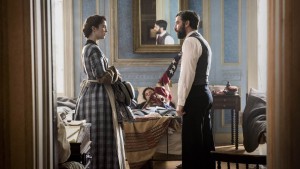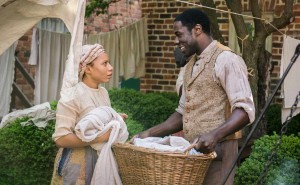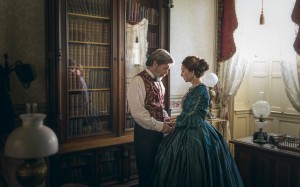
Mercy Street, a Civil War hospital drama set in 1862, is PBS‘s first original scripted series in over a decade. Produced by Ridley Scott (Bladerunner, 1982) (The Martian 2015), and David Zucker (“The Good Wife”), the ensemble cast includes Mary Elizabeth Winstead, who plays Nurse Mary Phinney. Recently widowed, and having had some nursing experience in caring for her sick husband, Mary decides to put herself to some use and is assigned to work at the hotel turned hospital. However, she’s not quite prepared for the gruesome injuries of the battlefield suffered by both Yankees and Confederates. Aptly named “Mercy Street” the hospital policy calls for the staff to put their prejudices aside, and care for any soldier delivered there.
Filmed in Richmond, Virginia, Emmy nominated cinematographer, Stephen St. John, already knew the challenges the mansion itself would pose, as he shot inside the exact same building for the 2013 miniseries, Killing Kennedy. He found himself quickly transitioning from 1963 to the 1860s. Shooting interiors was an enormous challenge, because the building was made of concrete, built after the previous home burned down. Newly fortified for natural disasters, trying to transmit images from room to room was tricky, especially since the crew only had access to the stairs, as the one elevator in the mansion hadn’t worked in thirty years. They were surrounded by the 2015 outside world, filled with cars and telephone wires, meaning all windows needed to be covered. “Every time you see an actor look out the window is a cheat.” The shoot took about seven days per episode, and primarily used two cameras for interiors, and three cameras in Petersburg, Virginia for exteriors.

The scripts themselves were so impressive, that Emmy nominated production designer, Stephen Marsh, came out of retirement to work on the series. Known for National Lampoon’s Vacation (1989), and the made for cable movie Citizen Cohn (1992) starring James Woods, he had recently moved to North Carolina to relax, but producer David A. Rosemont “kept insisting that he just read it.” When Marsh first arrived, the set, also known as “LaBurnum House, had been decorated in 1950 faux Chinese wallpaper style.” PBS’s budget didn’t provide for new wallpaper, but the crew managed to simulate the effect for 1860s décor with paint rollers. Marsh found that one of his big challenges was paying attention to detail on the Civil War period piece. There was of course no electricity back then, so any semblance of the modern day, such as light switches, had to be covered. He was also careful of telephone lines outside, and hung washing lines in front of them. In addition, he wanted to give the scenes “the look of a colored lithograph.” As a Brit, he was proud to work on the project and felt the well researched series was important to American viewers, especially.
Costumer, Amy Andrews Harrell, came on board immediately after she met one of the creators of the series, Lisa Wolfinger, in Richmond. Harrell was excited to delve into the Civil War psyche and have that come back through the characters. She defines the story as “a gripping story of conflict” between Union and Southern sympathizers. She is proud to work for PBS, “whose mission is to do everything deliberately,” while making sure every penny spent matters. Amy first became interested in costumes by playing with her mother’s dresses and holds a Masters Degree from Southern Methodist, where she studied costume design.

Makeup artist Ashley Gardner Fetterman was also excited to work on the project as she loved this period in history. Fetterman first studied makeup and prosthetics under the auspices of Oscar winner, Joel Harlow (Star Trek 2009), in his lab where she made sculptures and helped run molds. Her research for “Mercy Street,” included “ordering books on the era and reviewing Ken Burns’ epic documentary, The Civil War (1990).” One of her contributions to the show included helping to build a true to life prosthetic leg for the character Ezra (played by Dietrich Teschner). As Ezra was prepped for surgery, the leg needed amputating and was designed so that the surgeon and nurses could peel the skin back. They “poured the leg out of silicon, then added different layers to it. Everything was made in pieces, so the layers could be pushed aside” during filming. The process itself took three or four days as they worked fifteen hour days. Fetterman is “proudest of the quality work they were able to produce,” considering time restraints and budget. The designer also worked on Killing Kennedy and it made all the difference knowing some of the crew.
Although “Mercy Street” only serves up six episodes, it has recently been announced they will continue for Season 2. The freshman drama will be able to further explore group dynamics and the brutal aftermath of the battlefield, while shooting in history steeped Virginia.





